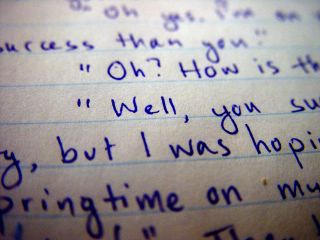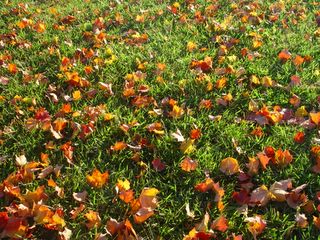
The Thoughts You Save May Be Your Own
G.K. Chesterton scribbled his inspirations down on linen napkins, shirt cuffs (his, we hope) and tablecloths. Lindsay would kill me if I went this far; and, anyway, my aesthetic sensibilities rebel at the thought of prolific ink stains.
However, I have been known to scribble incoherently concise (to others) notes on paper napkins, junk mail, and discarded academic forms. One benefit of this system is that the battered scraps of paper lying around eventually provoke me into developing them electronically. Then I can trash the originals, which are usually coffee-stained, smudged and liberally covered with ink-sketches by the time of their translation.
Arguably, the proper place for inspiration-transcription is a journal, but you can jot down kernels of thought in a nicely-bound journal and lose them forever. You close the notebook, put it on the shelf, and it takes an effort of will and a good memory to open it again and retrace your steps. The notebook just looks so right, so comfortable, sitting there on the shelf. It reclines in its corner; I lean back in my chair; the mental landscape is unobtrusively smooth and muted. A nap seems fitting.
Yes, the journal can definitely wait, but what’s this?—these ugly sheets of paper littering my desk!—these must be dealt with.
Filed in: Writing

















